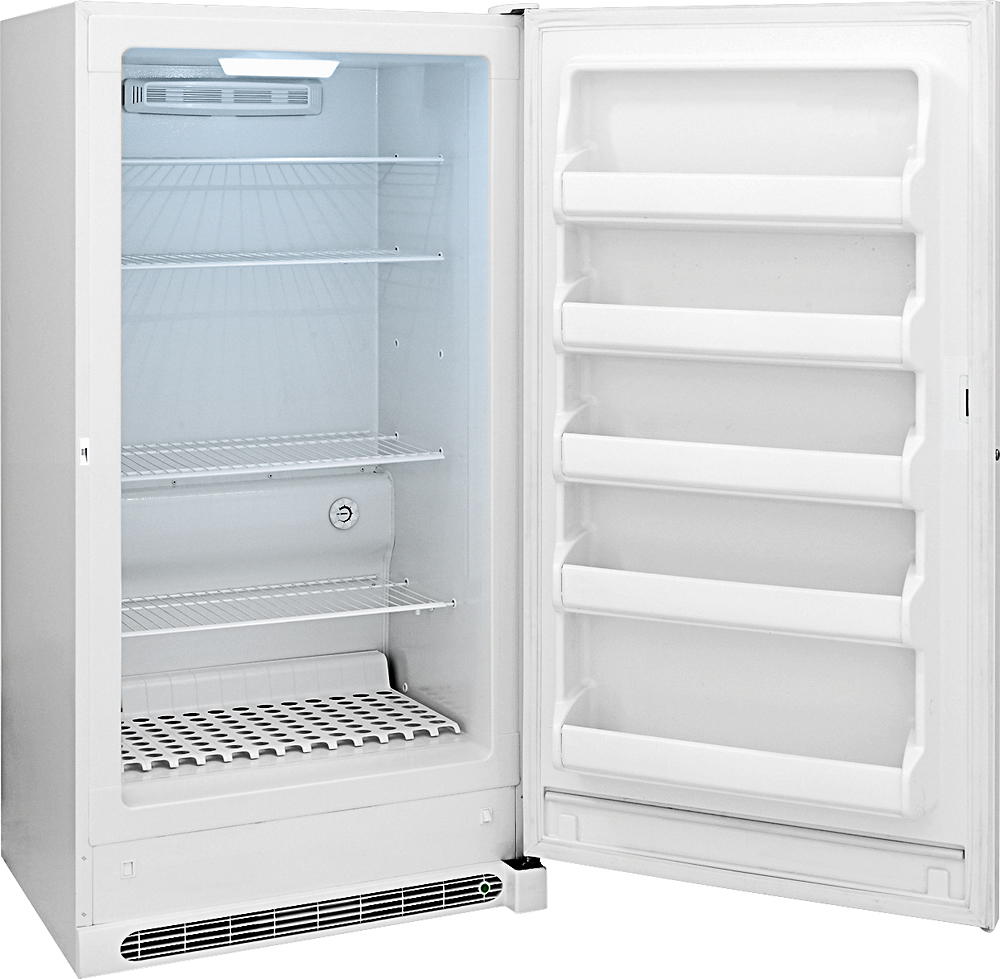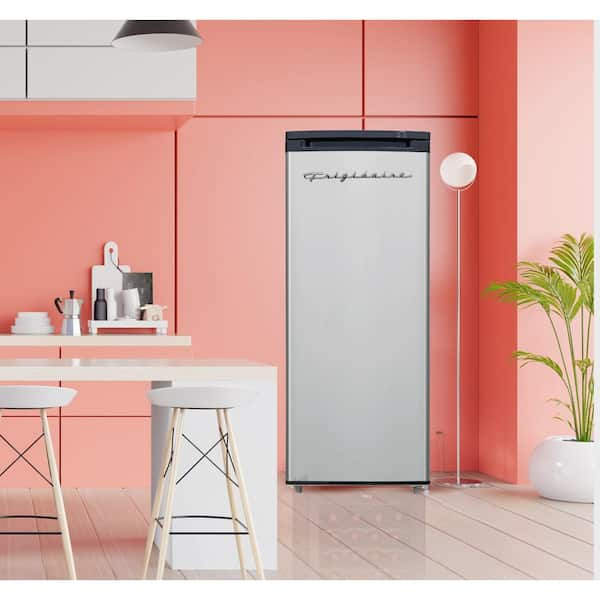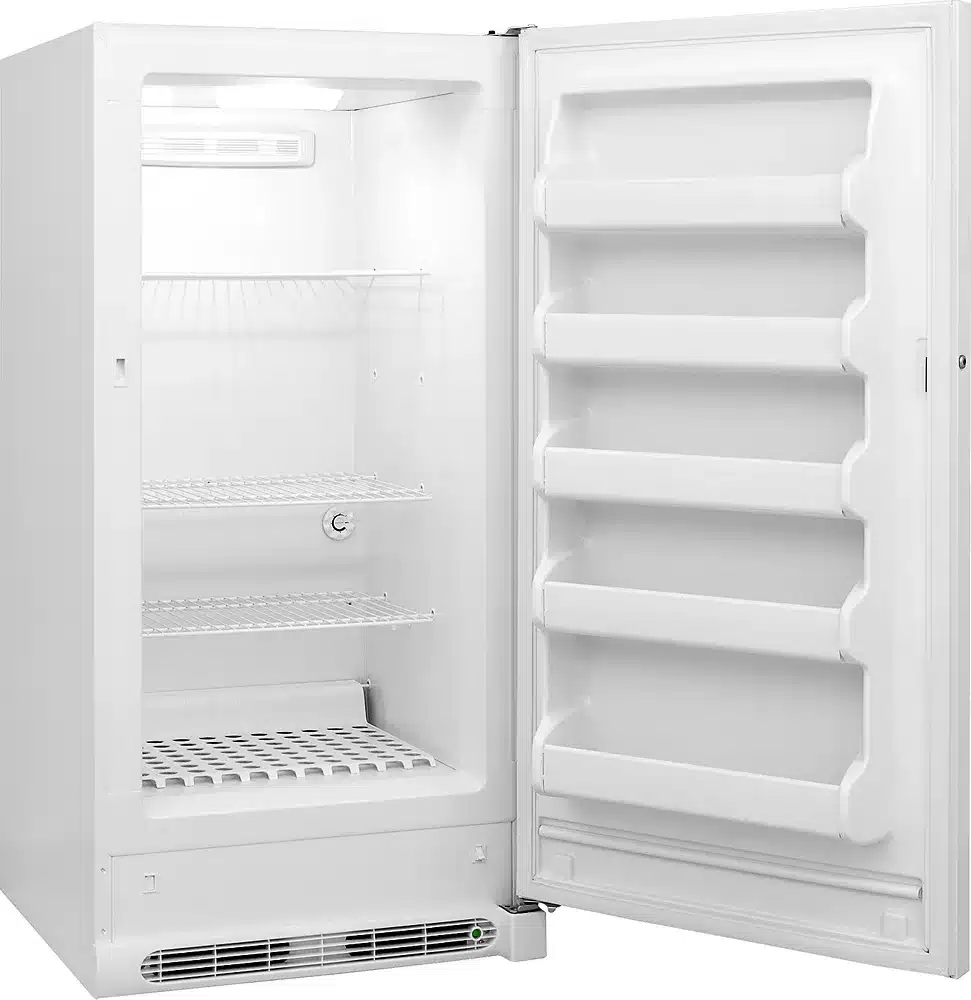If your Frigidaire freezer is not cooling properly, running constantly, or cycling on and off frequently, you might have a problem with the thermostat. The thermostat is the part that regulates the temperature inside the freezer. It senses the temperature and turns the compressor on and off as needed to maintain the set temperature.
The thermostat is a small device that has a dial or a knob that can be adjusted to set the desired temperature. To test it, you need to locate it, disconnect it from the power source, remove it from the freezer, and use a multimeter to check its continuity.
In this post, we’ll show you how to test the thermostat in your Frigidaire freezer in a few easy steps. We’ll also explain why it’s important to test it, and what to do if you find out it’s faulty. Let’s get started!
Why should you test the thermostat in your Frigidaire freezer?
The thermostat is an essential part of your Frigidaire freezer, as it helps to keep the freezer at the optimal temperature for food preservation and energy efficiency. If the thermostat fails or malfunctions, it can cause several issues with your freezer, such as:
- Too warm or too cold temperature.
- Frost or ice buildup on the evaporator coil or fan.
- Increased energy consumption and bills.
- Damage to other components, such as the compressor or the main control board.
Therefore, it’s important to test the thermostat in your Frigidaire freezer regularly, preferably every 6 to 12 months, depending on your usage and environment.

How to test the thermostat in your Frigidaire freezer safely and easily
Before you attempt to test the thermostat in your Frigidaire freezer, make sure you have the following tools and materials ready:
- A Phillips head screwdriver or a similar tool that can fit the screws that hold the control housing and the thermostat in place.
- A pair of needle-nose pliers or a similar tool that can disconnect the wire terminals from the thermostat.
- A multimeter that can measure resistance or continuity.
- A container or a bag to store any food items that might thaw during the testing process.
Once you have everything ready, follow these steps to test the thermostat in your Frigidaire freezer:
- Unplug your Frigidaire freezer from the power outlet and open the door.
- Remove any food items from the freezer and store them in a container or a bag in a cool place.
- Locate the thermostat on your freezer. It could be either behind the control housing inside the fresh food compartment of your refrigerator, behind the back panel of the freezer compartment3, or behind a small access panel on the side of the freezer. Refer to your owner’s manual or contact Frigidaire for more information about your specific model.
- Use your screwdriver to remove the screws that hold the control housing or the back panel or the access panel in place.
- Pull out the control housing or the back panel or the access panel and set it aside.
- Locate the thermostat on your freezer. It should be a small device that has a dial or a knob that can be adjusted to set the desired temperature. It should also have two wires connected to it by wire terminals.
- Use your needle-nose pliers to disconnect the wire terminals from the thermostat. Be careful not to damage them or touch them together.
- Pull out the thermostat from its slot or bracket and set it aside.
- Set your multimeter to measure resistance or continuity. If you’re not sure how to do this, refer to your multimeter’s manual or contact its manufacturer for assistance.
- Touch one probe of your multimeter to one terminal of your thermostat and touch another probe to another terminal of your thermostat.
- Check the reading on your multimeter. If you’re measuring resistance, it should show some resistance value between 0 and infinity ohms. If you’re measuring continuity, it should show continuity (a beep sound or a zero reading). This means that your thermostat is closed and working properly.
- Turn the dial or knob of your thermostat to its lowest setting (the warmest temperature).
- Check the reading on your multimeter again. If you’re measuring resistance, it should show infinity ohms (no resistance). If you’re measuring continuity, it should show no continuity (no beep sound or an infinite reading). This means that your thermostat is open and working properly.
- If your multimeter shows different readings than expected at any point, it means that your thermostat is faulty and needs to be replaced.
Congratulations! You have successfully tested the thermostat in your Frigidaire freezer. Now you can determine if it’s working properly or if it’s faulty and needs to be replaced.

FAQs about testing the thermostat in your Frigidaire freezer
Here are some common questions that Frigidaire owners have about testing the thermostat in their freezer:
- What if I can’t find or access the thermostat in my Frigidaire freezer?
If you can’t find or access the thermostat in your Frigidaire freezer, it could mean that either:
- Your model doesn’t have one, as some newer models use an electronic temperature control instead of a mechanical thermostat. The electronic temperature control is an electronic device that monitors and adjusts the temperature automatically based on various factors, such as usage and environment. You don’t need to test it manually.
- Your model has a different location or configuration for the thermostat, such as inside or behind another part of your freezer. You might need to remove some screws or panels to access it.
- Your model has a different part number or name for the thermostat, such as a temperature sensor or a thermistor.
In any case, you can check your owner’s manual or contact Frigidaire for more information about your specific model.
- What if I break or damage the thermostat while testing it?
If you break or damage the thermostat while testing it, don’t panic. It’s not a vital part of your freezer, and breaking or damaging it won’t affect its function or performance. Just make sure you don’t damage any other parts of your freezer, such as the evaporator coil or fan, while testing it.
- What if I forget to test the thermostat in my Frigidaire freezer?
If you forget to test the thermostat in your Frigidaire freezer, you might notice some problems with your freezer, such as:
- Too warm or too cold temperature.
- Frost or ice buildup on the evaporator coil or fan.
- Increased energy consumption and bills.
- Damage to other components, such as the compressor or the main control board.
If you notice any of these signs, check your freezer for the thermostat and test it as soon as possible. If you don’t test it regularly, you might also void your warranty, so don’t delay.
Conclusion
The thermostat is a part that regulates the temperature inside the freezer. It senses the temperature and turns the compressor on and off as needed to maintain the set temperature.
Testing the thermostat in your Frigidaire freezer is not a difficult task, as long as you have the right tools and follow some simple steps. All you need is a screwdriver, a pair of needle-nose pliers, and a multimeter. Just disconnect the wire terminals from the thermostat, remove it from the freezer, and use a multimeter to check its continuity.



